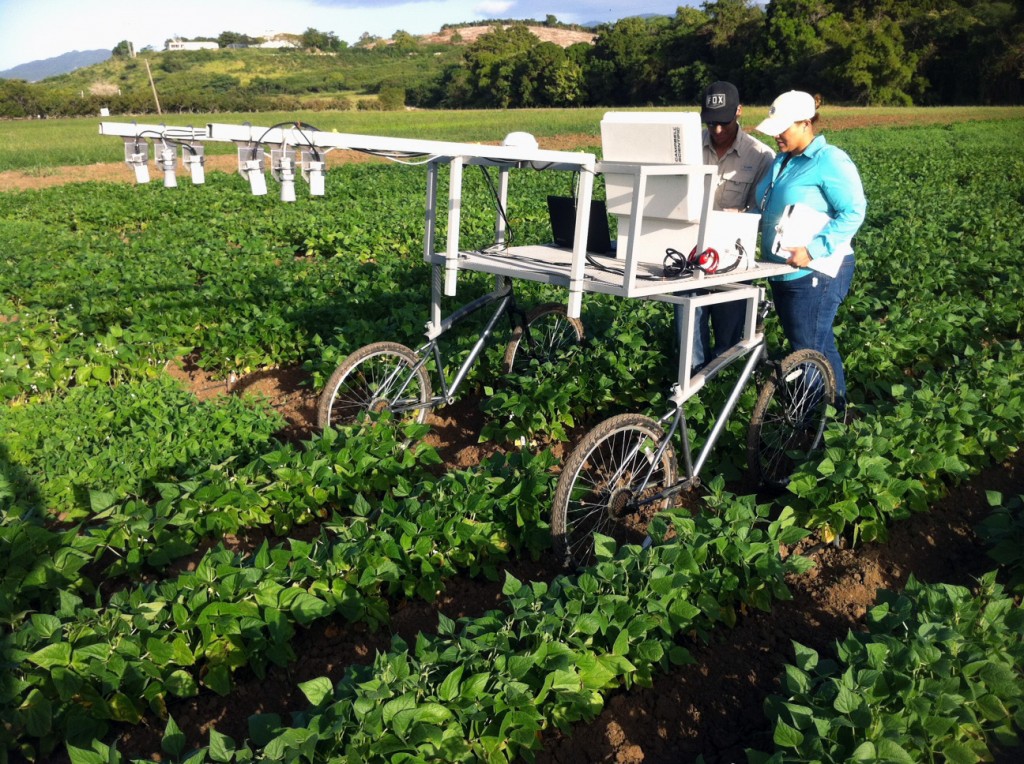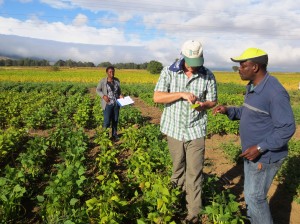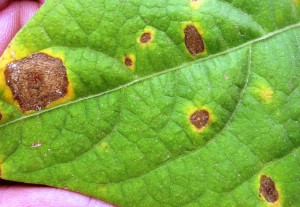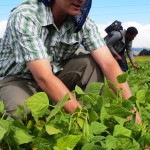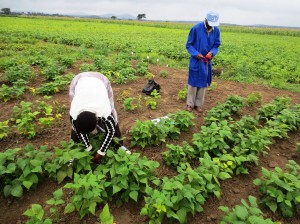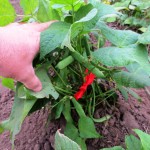In collaboration with Drs. Susan Nchimbi and Paul Kusolwa, Sokoine University, single plant selections were completed from 35 PIC populations and a number of trials were evaluated in Arusha and Mbeya, Tanzania from 6/07 to 6/13/2015.

Single plant selections from 35 PIC populations were completed at Selian (Arusha; left photo) and at Uyole (Mbeya; right photo) Stations.
Evaluation of the ADP
A subset of 47 lines from the ADP population, that performed well in 2014, were evaluated at the Selian Station in Arusha for white mold; and in Mbeya for rust, angular leaf spot and vigor. This ADP subset was replicated three times. The average score for ALS was 5.7, and for rust and vigor were 3.9 and 3.0, respectively, in Mbeya. Tanzanian breeding lines were identified with potential for release.
Evaluation of the Durango Diversity Panel
Two hundred pinto, pink, small/medium red, and great northern lines and cultivars were evaluated in Arusha and Mbeya, for reaction to rust, white mold, angular leaf spot and adaptation. The full range of response was seen for each disease, from very susceptible to resistant, and good production potential was noted for some genotypes at both sites. Much of the germplasm in this panel was well adapted to both environments. Openness to seed types in Tanzania may create an opportunity for pinto and great northern market classes, while the small red class is already an acceptable market class.
Single Plant Selection from PIC populations
Single plant selections from 35 PIC populations were completed at Selian (Arusha; left photo) and at Uyole (Mbeya; right photo) Stations. About 600 selections were completed. Plant rows of selections from 2014 from the PIC-005 population, Canada (ADP-0010) x CAL 143, and from the PIC-003 population, Kilombero (ADP-0004) x AND 277 population, showed no disease in Arusha and were evaluated for rust and angular leaf spot in Mbeya. These lines show promise for future release.


